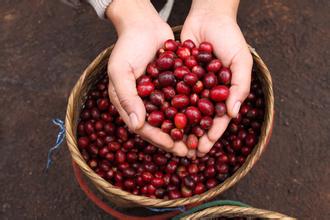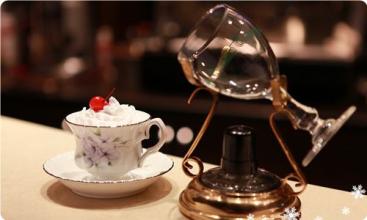Four criteria for judging the quality of milk bubbles how to judge the quality of milk bubbles
Friends who have just come into contact with coffee still have a big problem with how to judge the quality of milk bubble. today, Chongqing Brista Coffee training School wants to share with friends how to judge the quality of milk bubbles. On how to judge the quality of milk foam every time I communicate with friends, I only get some very general results.
Standard one: milk foam should be delicate.
For example: be delicate (what is delicacy? No one can explain it in precise words), like velvet (what is velvet? As a national protected animal, how many people dare to hit a swan and touch its velvet? To be slippery (milk is the most slippery, just like this guy is lazy and has nothing left in your mouth), there are numerous such extremely vague adjectives. But there is a saying that is very close to the delicate state of milk foam: the surface should be reflective. This statement is very objective and direct, at least it can be used as a standard to be seen by the naked eye.
The main reason for saying so much here is to give you a standard that can be touched by the hand, seen by the eye and heard by the ear. Once this standard is mastered, we will discuss the comprehensive impression formed in the mouth through the oral mucosa, taste buds and through the internal nostrils of the palate, that is, the question of taste.
So what are these standards? The surface should be able to reflect light first.
Standard 2: no coarse bubbles
There is no coarse foam on the surface. This requires a lot of foam control, when larger than the diameter of 1mm are called coarse foam.
Standard 3: the foam temperature is 60 degrees Celsius-65 degrees Celsius
In the case of the same amount of milk (all added to the position at the bottom of the cylinder mouth), no matter 60% full or 70%, 80%, 90% or full, the temperature should be the same, and the number of foam can not be adjusted by the temperature.
Standard 4: don't waste milk.
Make two cups of cappuccino, using the WBC standard cup. Pour the foam into the cup and leave no drop in the jar. If this standard is sublimated a little bit, it will become: just hit as many milk bubbles as you want (except for micro-bubbles such as macchiato), which is very difficult to practice and takes a long time.
The above four standards have been achieved, at least it can be regarded as a good bottle of milk foam in terms of vision, feel and technology. Earlier also mentioned a sense of hearing, which depends on the milk, just hit the milk foam, must not hear a very continuous burst sound, which can ensure the persistence of the milk foam in the cup.
The article comes from Chongqing Beresta Coffee College.
Important Notice :
前街咖啡 FrontStreet Coffee has moved to new addredd:
FrontStreet Coffee Address: 315,Donghua East Road,GuangZhou
Tel:020 38364473
- Prev

Coffee rookie entry-level learning coffee lesson 1 basic knowledge of coffee introduction to coffee varieties
Coffee belongs to the evergreen shrub of the genus Rubiaceae, which is centered in the tropics. There are about 6000 species of Rubiaceae belonging to 500 genera. Coffee has always been thought to have certain effects, such as strengthening the stomach, waking up the brain, stopping bleeding, dissipating heat, strengthening the body, and so on. The more famous Rubiaceae plant is Gardenia jasminoides, whose fruit was dried and used as medicinal material a long time ago. The three native species of coffee
- Next

Taste and characteristics of coffee around the world Irish coffee cappuccino mocha Brazil Kilima
Coffee itself is sour, ah, if you drink black coffee, the sour taste is more obvious. Maybe your partner doesn't add enough milk, adding more milk will taste slippery and better than your partner. If you like sweet, add sugar. Usually I don't add sugar, that is, black coffee and milk. Nestle coffee is roasted at high temperature and has a scorched taste. Maxwell is better, while American coffee is relatively shallow.
Related
- Beginners will see the "Coffee pull flower" guide!
- What is the difference between ice blog purified milk and ordinary milk coffee?
- Why is the Philippines the largest producer of crops in Liberia?
- For coffee extraction, should the fine powder be retained?
- How does extracted espresso fill pressed powder? How much strength does it take to press the powder?
- How to make jasmine cold extract coffee? Is the jasmine + latte good?
- Will this little toy really make the coffee taste better? How does Lily Drip affect coffee extraction?
- Will the action of slapping the filter cup also affect coffee extraction?
- What's the difference between powder-to-water ratio and powder-to-liquid ratio?
- What is the Ethiopian local species? What does it have to do with Heirloom native species?

